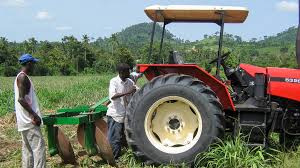Agriculture employs most of Africa’s population and contributes significantly to GDP. Despite its importance, agriculture remains underdeveloped in many African countries, with high potential for sector expansion. Low input use and mechanization are primary constraints to agricultural development.
Africa is the only region where agricultural productivity has remained largely stagnant since the 1960s. In 2014, average cereal production in Africa was 1.5 ton/ha, compared to a global average of 3.6 ton/ha.
Experiences in Asia and Latin America demonstrate that agriculture can transform into a progressive commercial industry. Investment in agricultural machinery has enabled farmers to intensify production, improving income and quality of life.
In countries like India, China, Brazil, and Turkey, rapid growth in farm machinery demand has spurred local manufacturing, making them major producers and exporters (FAO/UNIDO, 2008).
Similar development could occur in Africa if farmers intensify activities through increased mechanization, leading to higher input use, food production, food security, and reduced import dependence.
Read Also: Fertilizer Application, Pests and Diseases Control in Cocoa
Definition and Scope of Agricultural Mechanization

The term “mechanization” describes tools, implements, and machinery applied to enhance farm labor and land productivity, using human, animal, or motorized power, or combinations thereof.
It encompasses all forms of power sources and mechanical assistance, from simple hand tools to draught animal power and mechanical technologies. Agricultural mechanization is defined as the economic application of engineering technology to improve the effectiveness and productivity of human labor.
Overview of Mechanization Practices in Nigerian Agriculture
In Nigeria, farm power relies predominantly on human muscle, using hand tools like hoes, which limit energy and operational output.
These methods restrict the land cultivable per family, delay farm operations, and reduce the efficacy of cultivation and weeding, lowering crop yields.
Objectives of Agricultural Mechanization for Rural Development
FAO and UNIDO (2008) state that agricultural mechanization aims to:
Reduce human drudgery
Increase yields through timely operations with more power
Expand cultivated land
Promote agriculture-led industrialization and rural economic markets
Improve farmers’ standard of living
Enhance precision of operations
Improve work environments
Enhance safety
Reduce crop and food product losses
Increase land productivity
Read Also: Categorization, Damages Caused, Diagnosis and Control Methods of Plant Diseases
Types of Agricultural Machinery in West African Farming

Commonly used agricultural machinery includes tractors, combine harvesters, threshers, manure spreaders, fertilizer distributors, plows, cultivators, seeders, and planters. In West Africa, Nigeria leads in tractor volume, followed by Côte d’Ivoire and Guinea.
Tractor usage per hectare in 2000 showed Côte d’Ivoire leading with three tractors per 1000 hectares, followed by Guinea, while others had less than one. Most countries increased mechanization over time, except Ghana. Recent FAO data are unavailable.
In Mali (2010), 1,114 threshing machines, 703 mills, 1,286 huskers, 3,878 motor-pumps, 520 multifunctional platforms, and 9 mini rice mills were reported. In Burkina Faso (2006), 40% of farmers used mechanization, mainly draught animals, with 8,621 tractors on 0.4% of farms.
Mechanization applies to land preparation, weeding, harvesting, pest control, irrigation, drainage, transportation, crop processing, and storage, using tractors, animal power, human power, internal combustion engines, electric motors, solar power, and other energy conversion methods.
Technologies must align with local agronomic, socio-economic, environmental, and industrial conditions.
Do you have any questions, suggestions, or contributions? If so, please feel free to use the comment box below to share your thoughts. We also encourage you to kindly share this information with others who might benefit from it. Since we can’t reach everyone at once, we truly appreciate your help in spreading the word. Thank you so much for your support and for sharing!

